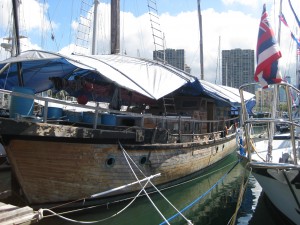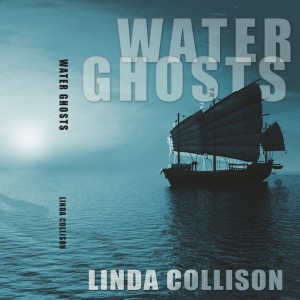I’m reading Birds Without Wings, by Louis de Bernieres — a novel I chose partly because I enjoyed Corelli’s Mandolin and partly because the particular setting is one I know so little about. Birds Without Wings is the story of a small coastal town in South West Anatolia in the dying days of the Ottoman Empire. I was lured by the setting – an element important to me as both a reader and a writer – and I bought the book on the promise of setting and my confidence in the author’s proven ability to transport me.
Is it because I like to travel that I’m drawn to novels that give me a vivid sense of place and time?
As fiction writers we hear a lot of advice about the importance of plot, conflict, and character development. Stories happen to people (or other sentient life forms). What happens is plot. Characters and plot make a story but stories don’t take place in a void, they grow out of a particular place at a particular time in history. This time and place is the story’s setting. Setting is more than a backdrop on a stage — it’s the medium, the stew, the garden in which the story is born and takes shape. Setting directly affects plot and character development.
There are different techniques writers employ to portray setting. One way is to write an establishing shot for the beginning and subsequent scenes, shooting with a wide angle lens, so to speak. The establishing shot is a sentence or paragraph that reveals the environment and places the reader in the scene – before focusing the lens on the protagonist and his actions or on the thoughts inside the character’s head.
Hemingway use of the establishing shot is evident in the short story “Hills Like White Elephants.” Here are the opening three sentences: The hills across the valley of the Ebro were long and white. On this side there was no shade and no trees and the station was between two lines of rails in the sun. Close against the side of the station there was the warm shadow of the building and a curtain, made of strings of bamboo beads, hung across the open door into the bar, to keep out flies.
In these three sentences (each one a little longer and more complex than the one before it) the author sets us in the scene. Even if we don’t know where the Ebro River is at first, we know it is a dry and barren place through which a river and railroad tracks run – a place so hot even the shade cast by the building is warm. The curtain made from strings of bamboo beads is a tangible object that forms a bridge from something we know or have seen before to this particular setting. By the end of the paragraph (three more sentences) we know the story takes place at a remote train station in Spain between Barcelona and Madrid and it involves an American man and a “girl.” After this establishing shot of six sentences Hemingway slips into his effective style of terse dialogue and short, simple, powerful sentences to develop the characters and reveal the inherent story. (Tim Tomlinson of the New York Writers Workshop talks about Hemingway technique on pg. 57 of The Portable MFA in Creative Writing. The story “Hills Like White Elephants” is available online in pdf format and is free to download.)
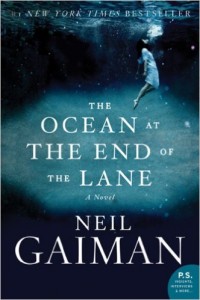 Neal Gaiman’s The Ocean at the End of the Lane beings with the protagonist driving down a long, narrow, winding, bumpy road. As we ride along with him we feel we’re driving back in time and we’re not entirely sure it’s a good place we’re headed.
Neal Gaiman’s The Ocean at the End of the Lane beings with the protagonist driving down a long, narrow, winding, bumpy road. As we ride along with him we feel we’re driving back in time and we’re not entirely sure it’s a good place we’re headed.
Developing a rich setting – is it accomplished through experience and imagination – or is it through the mechanics of craft? Both, I’ve discovered. The immersive technique of writing helps bring the setting into focus. Writers who have lived or can deeply imagine their settings and can bring to life details otherwise unseen by a writer who crafts by technique alone. Details and nuances of setting can be uncovered or added on during a second or third draft. Don’t go overboard – less is more – according to twenty-first century tastes. By choosing just the right details and the right words to convey the atmosphere – the physical, emotional, political, and the cultural environment – you immerse the reader in setting without bogging her down.
Deconstruct your favorite stories for setting, to see how its done. Browse novels in the library, at the bookstore, or online (Amazon’s “look inside” feature) to find techniques that resonate with you.
H.P. Lovecraft’s The Shunned House is all about setting – can a setting be the protagonist?
Joseph Conrad’s settings – often hot, tropical, shipboard, Victorian – are rich in mood, atmosphere, and moral conflict.
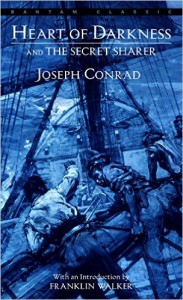 She floated at the starting point of a long journey, very still in an immense stillness, the shadows of her spars flung far to the eastward by the setting sun. At that moment I was alone on her decks. There was not a sound in her –and around us nothing moved, nothing lived, not a canoe on the water, not a bird in the air, not a cloud in the sky. In this breathless pause at the threshold of a long passage we seemed to be measuring our fitness for a long and arduous enterprise the appointed task of both of our existences to be carried out, far from human eyes, with only sky and sea for spectators and for judges.
She floated at the starting point of a long journey, very still in an immense stillness, the shadows of her spars flung far to the eastward by the setting sun. At that moment I was alone on her decks. There was not a sound in her –and around us nothing moved, nothing lived, not a canoe on the water, not a bird in the air, not a cloud in the sky. In this breathless pause at the threshold of a long passage we seemed to be measuring our fitness for a long and arduous enterprise the appointed task of both of our existences to be carried out, far from human eyes, with only sky and sea for spectators and for judges.
In this, the second paragraph of the novella The Secret Sharer, the author not only puts us on a sailing vessel in deathly quiet waters on the eve of a long voyage, he also evokes a supernatural atmosphere in his introspective tone and hints at a struggle of some sort, as well as a mystery.
Details of setting can mirror the mood or it can be in opposition to it. For example Shirley Jackson’s short story The Lottery begins on a beautiful blue sky day when nothing bad could possibly happen:
The morning of June 27th was clear and sunny, with the fresh warmth of a full-summer day; the flowers were blossoming profusely and the grass was richly green.
There is inherent tension here because the reader knows something is going to happen, but what? And to whom?
Another way to reveal the setting is piece by piece, weaving minute but important details into each paragraph – details that create atmosphere and remind us where we are. Neil Gaiman does this particularly well in his literary coming-of-age fantasy — except he wants to make us wonder when we are — have we traveled back in time, or forward in time? The place is familiar but is it now or is it then?
Part of the trick of portraying an exotic place or an historical time is not just showing what is unique about that setting but connecting us to sensations that are familiar to a modern reader; details or descriptions that form a bridge between what we’re familiar with and what we’ve never experienced first-hand.
Setting is often thought of as adjectives, phrases and entire sentences devoted to description, yet too much detail bogs the reader down the way a forest of kelp clings to a swimmer’s limbs. Instead of objects or description of weather, clothing, or architecture, think focus. What’s important to the story in the particular paragraph, the particular sentence you are writing? What do you want your reader to see or hear that grounds them in the setting – the place and time where this particular story was born? Don’t describe everything the character sees in the room, choose one or two details and work them into the action or dialogue.
Within the structure of a declarative sentence whole worlds can be evoked. Nouns and verbs can help express setting, even in an action sentence stripped of adjectives, adverbs and modifying phrases. This is setting at its most elemental. The mere action of moving a character from one place to another can evoke different settings. Nouns, verbs and direct objects are freighted with meaning so that even a six word sentence gives a hint of time and place. Here’s a simple exercise: Using only a noun, verb, and prepositional phrase or direct object, try to reveal a different setting.
 The couple strolled through the park
The couple strolled through the park
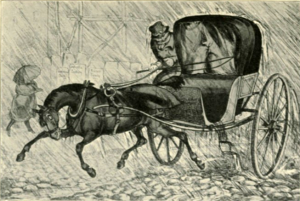 The carriage clattered across the cobblestones
The carriage clattered across the cobblestones
 The teenagers raced down the highway
The teenagers raced down the highway
Having chosen the best nouns and verbs for the job you can now flesh out some sentences with descriptive clauses to enrich the story’s environment. A character’s thoughts, personal values, cultural mores and prejudices can also indicate setting. Don’t forget dialogue but avoid overusing dialect and slang; it can be distracting, confusing, or even annoying. Instead, examine speech patterns, rhythms and vocabulary to suggest time and place.
Most of my own fiction is inspired by setting. In writing Water Ghosts I wanted to explore a setting within a setting, within a larger setting. That is, a boat carrying ghosts from the past as well as living souls, adrift on a vast unfathomable ocean. The story had its beginnings in my imagination aboard a real vessel — the Intrepid Dragon II — moored at the Ala Wai Small Boat Harbor on Oahu where Bob and I kept our own sailboat for many years. My experiences at sea further fueled the setting as well as the plot. Yet it took numerous drafts to portray the setting in a powerful way – as powerful as the ocean itself. Or at least that was my intention.
On the advice of a writer whose opinion I value, I added an establishing shot at the beginning of the first chapter, showing the boat Good Fortune at the crumbling docks of the Marianas Marina in Honolulu. Since most of the story takes place aboard this floating stage it was important to show the reader the boat from the protagonist’s perspective on the first page. In an earlier draft I had this information but it was further along in the chapter. Moving it to the beginning felt right and I thanked the writer (Rick Spilman, Old Salt Press ) for this suggestion. Here then, is the establishing shot.
Chapter 1
The doomed ship is set to sail at ten A.M. and I am to be aboard. The taxi has dropped us off at the marina – my mother, her boyfriend and me. They’re here to see me off.
From the parking lot I can see it. Good Fortune is unmistakable because it’s bigger than the other boats and because it’s old and foreign-looking. Three masts rise up like pikes from the rectangular deck. A tattered pennant hangs limply from the smallest one. Faded yellow silk.
I don’t want to go but Mother is making me. Walking toward it, carrying my sea bag, I already feel like I’m drowning. Dragging my feet along the rickety wooden pier, past neglected powerboats and sailboats covered with blue plastic tarps, I’m trying to resign myself to my fate. I’m trying to do what Dad used to tell me to do when I was afraid. Think of something funny! But nothing funny comes to mind.
Looking around at this run-down dockyard in an industrial park near the Honolulu International Airport I’m thinking it’s wrong, it’s all wrong. Hawaii is not paradise – at least, not for me. A jet takes off, flying low overhead, drowning us out momentarily with its thunderous roar. Mother covers her ears with her hands and squeezes her eyes shut until it passes. The boyfriend glances at his big gold watch and grins.
“Nine-forty,” he says. “You’ll be boarding soon.”
I wrote the first draft of Water Ghosts under the working title “Blue Milieu,” which gives you some idea of how important the setting was to me. More than background, setting surrounds us and is organic to each story we write. Setting influences plot and character development and provides a portal to the imagined past and future.
Bon voyage…
Water Ghosts, as narrated by Aaron Landon
James McCafferty, a 15-year-old troubled by the visions and voices in his head, is a unwilling passenger aboard a Chinese junk — an adventure-therapy sailing program for teens with behavior problems. Once at sea James’s premonitions of doom begin to take shape in the form of long-dead ghosts who populate the hold of the ship. One in particular, the spirit of Yu, a young courtier from the Ming Dynasty, makes himself known to James and seemingly tries to befriend him. Then one by one the adults on board go missing and the teens are left alone to fend for themselves — and struggle for their very lives.

